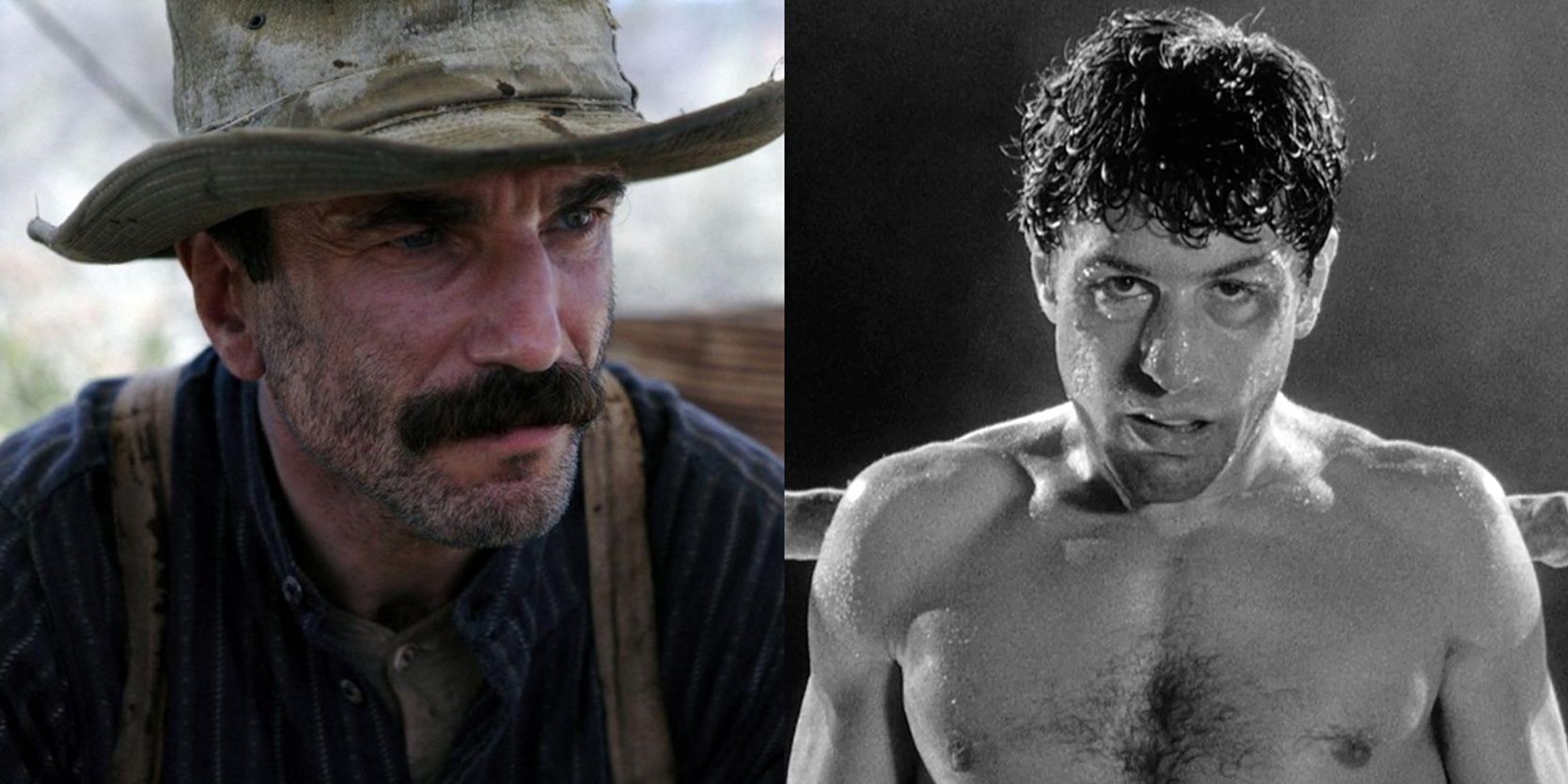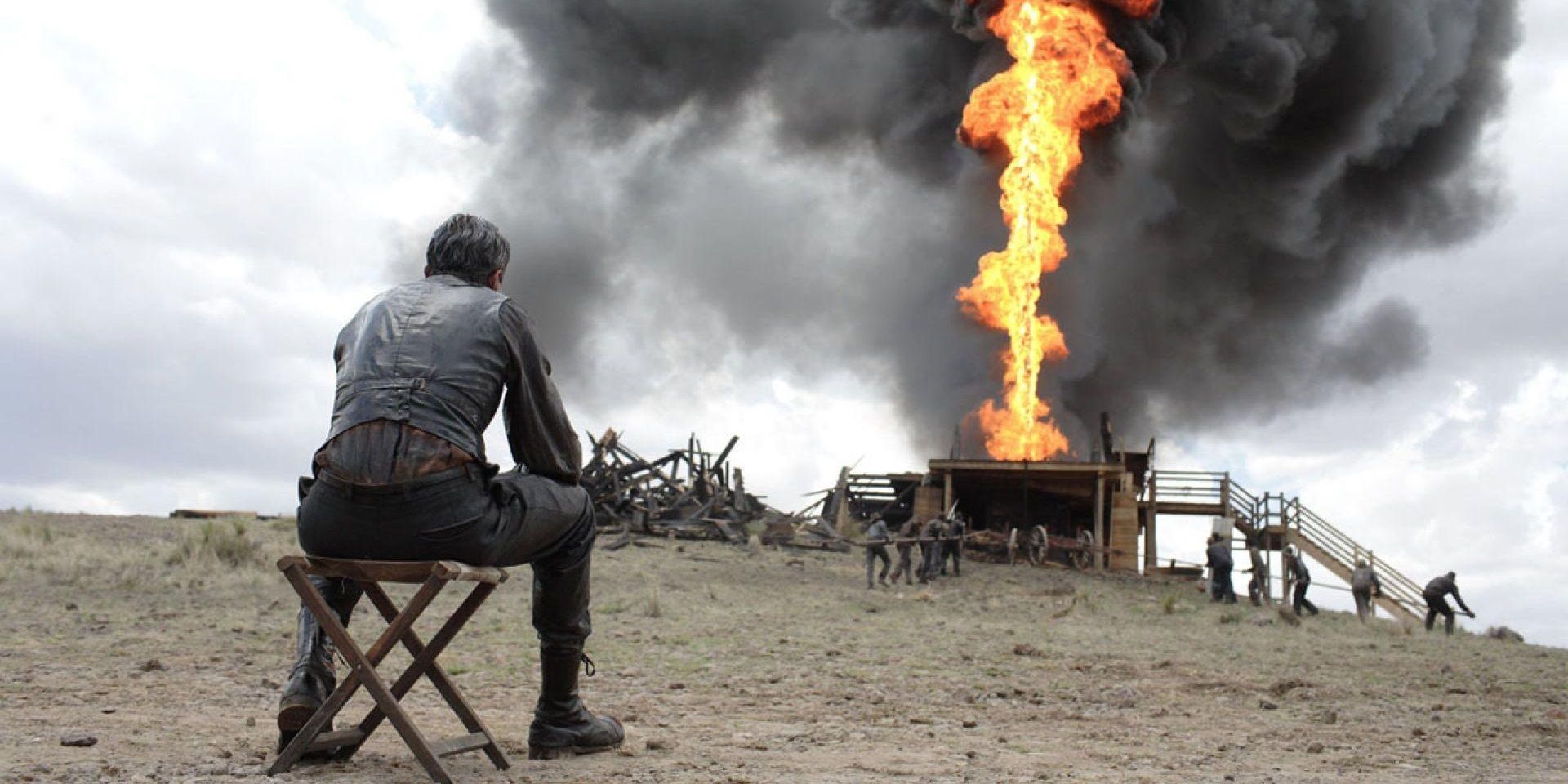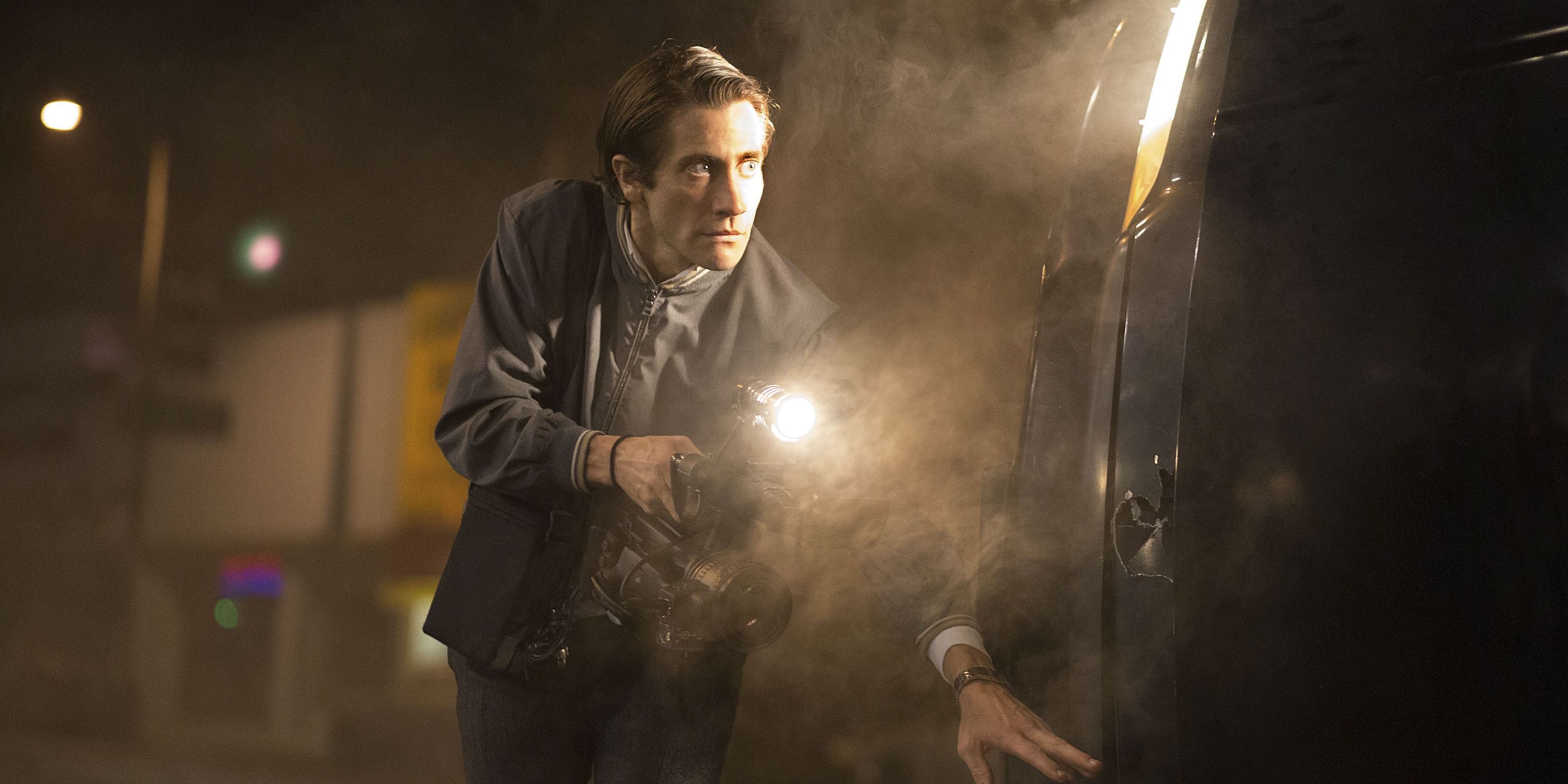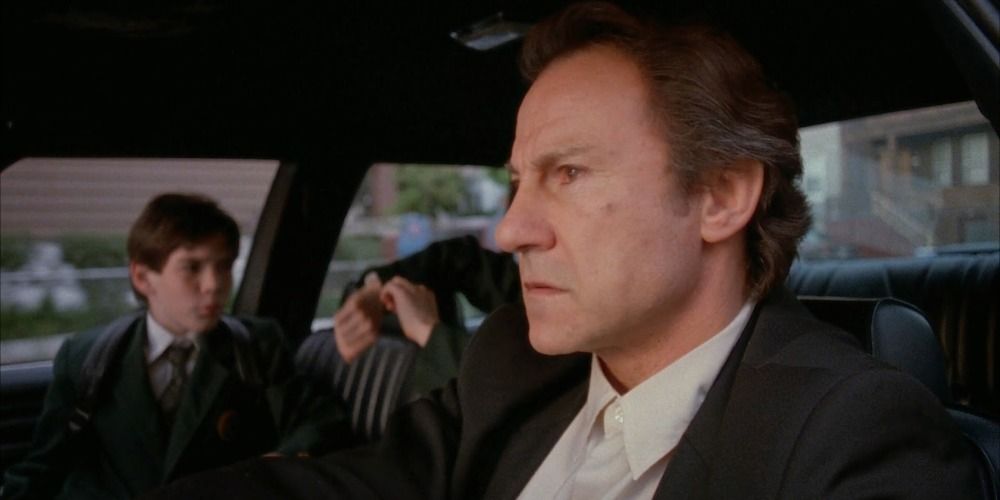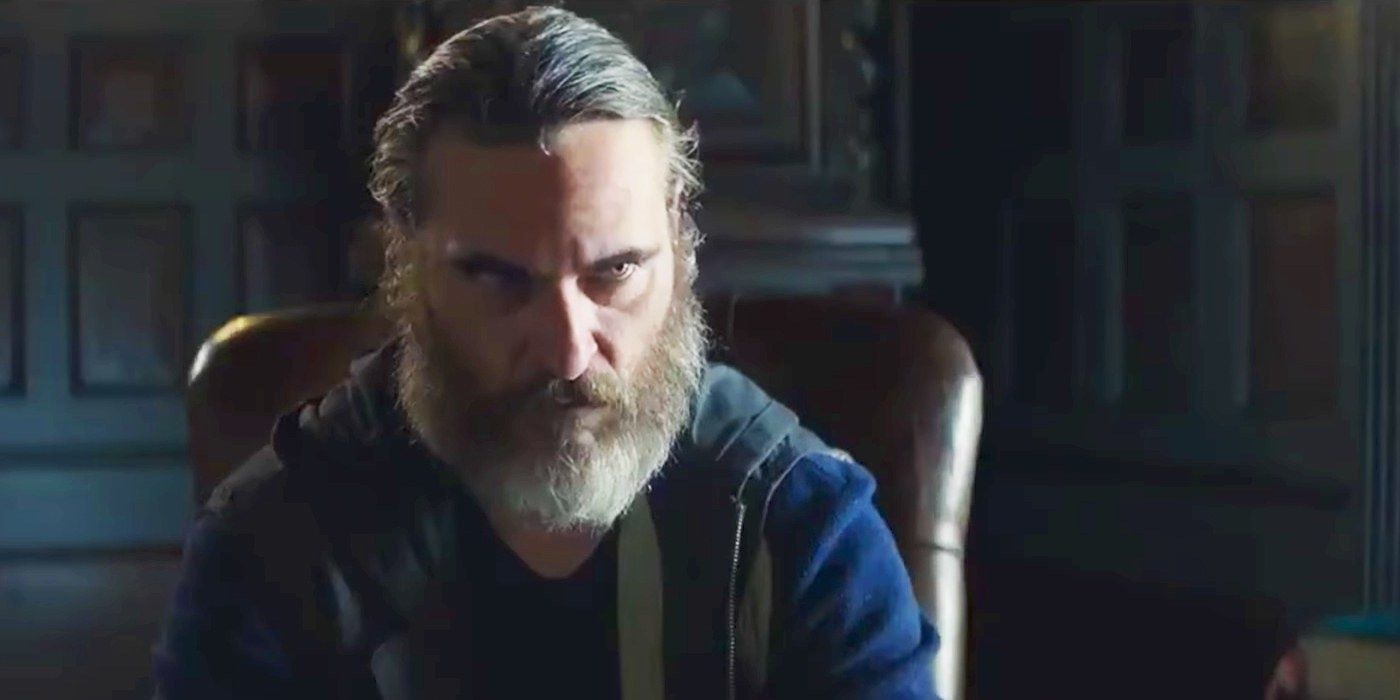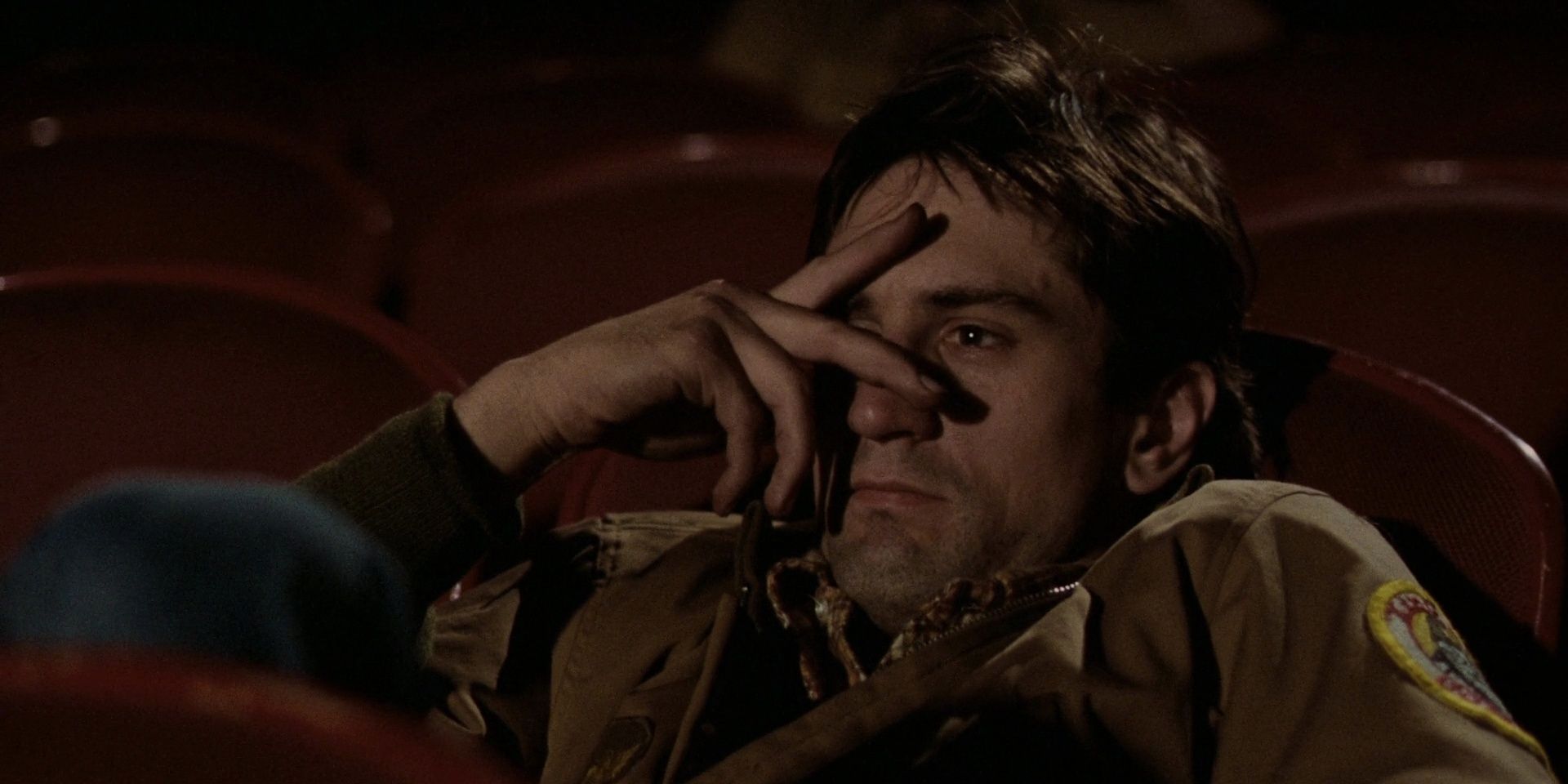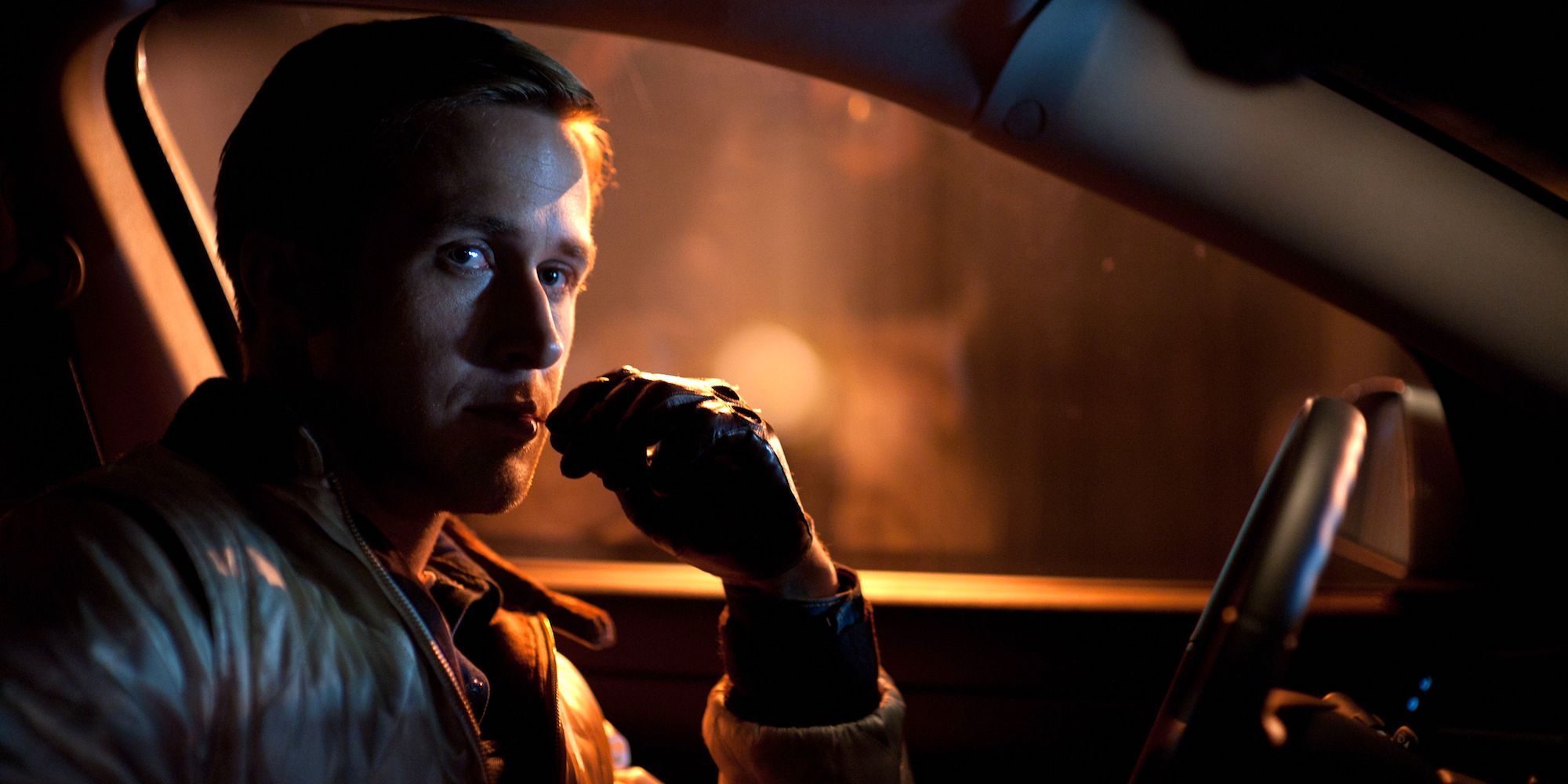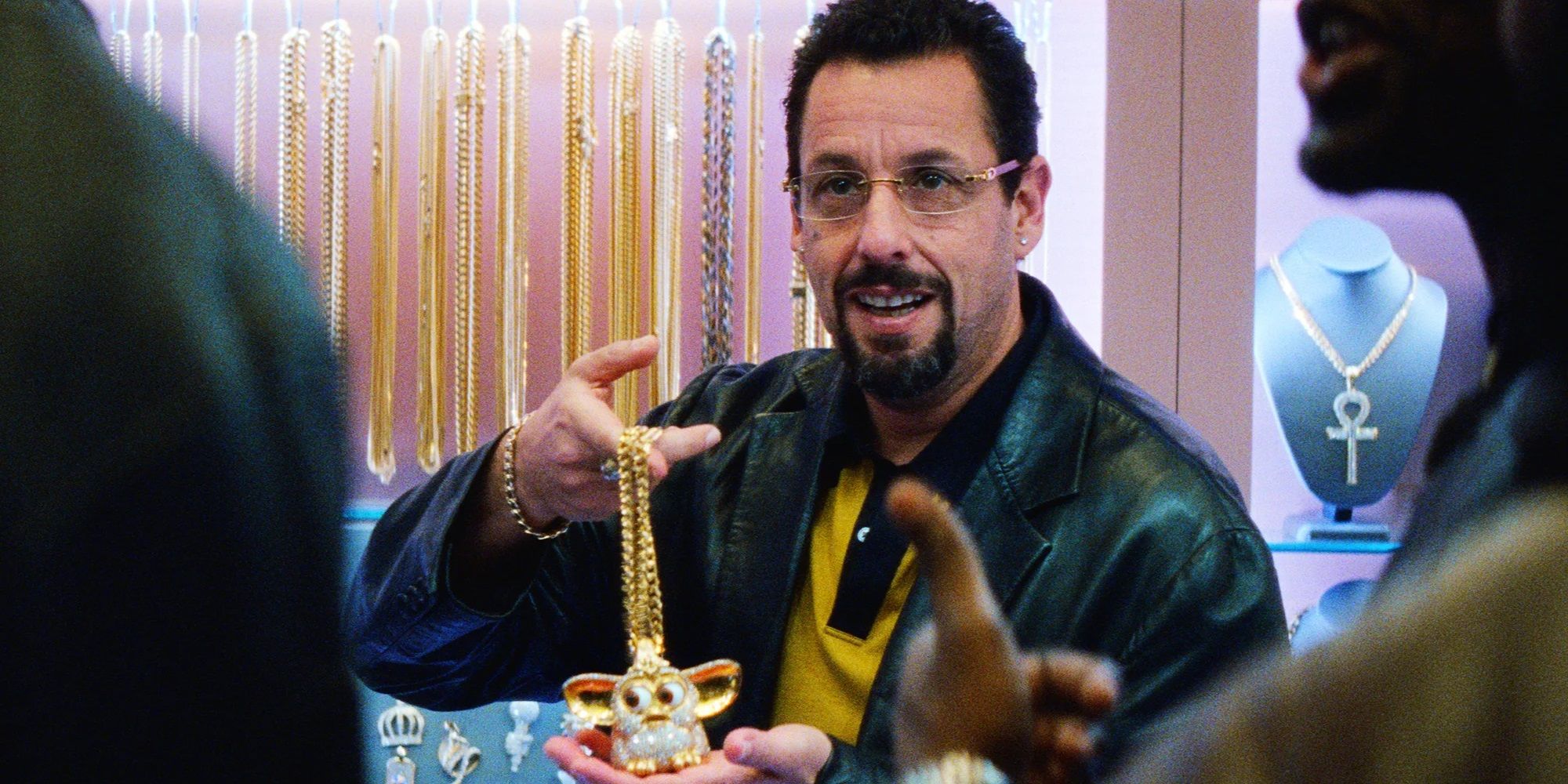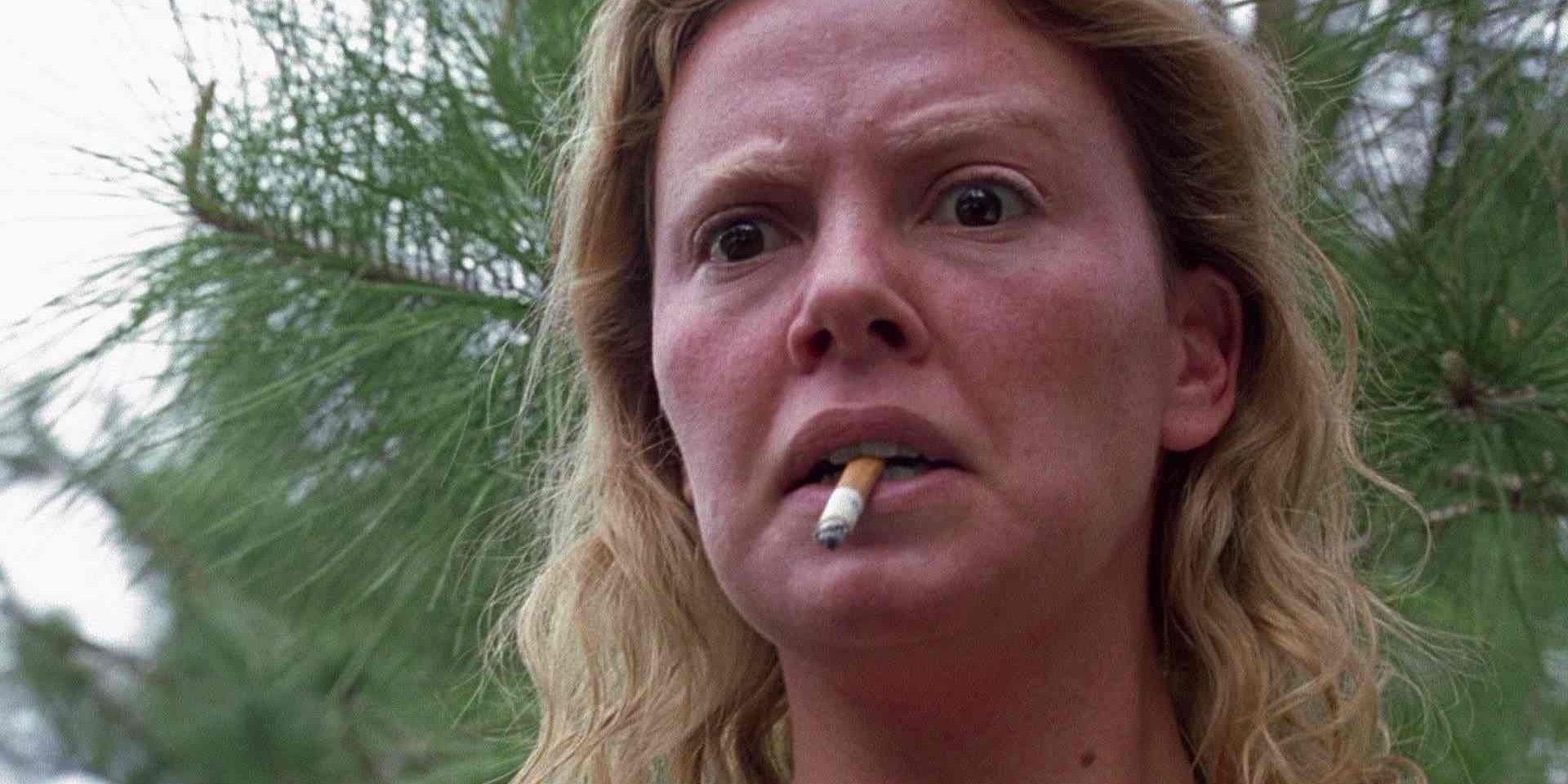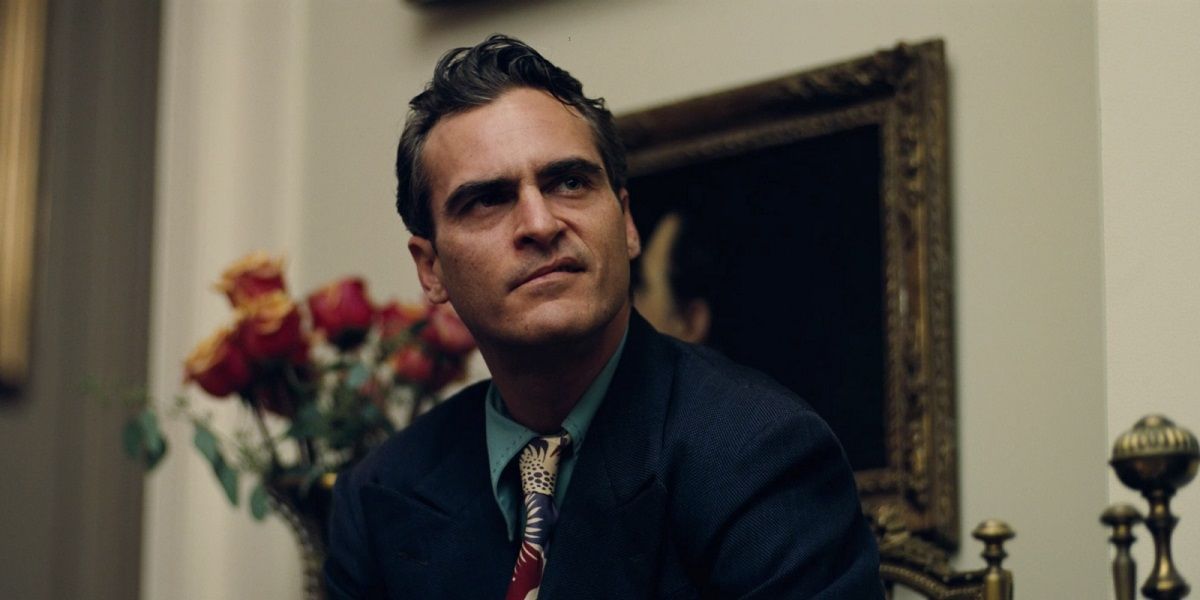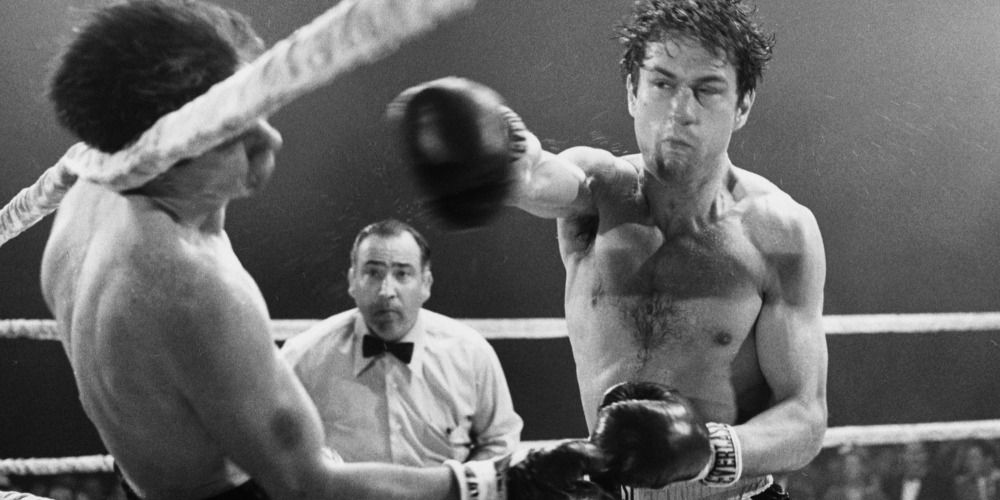Not every movie needs a plot to be compelling. A plot with engaging stakes and rising tension is a surefire way to capture the audience’s attention, but another way is to present a captivating character. Martin Scorsese has made a career out of character studies — he joked in his Oscar acceptance speech for The Departed that it was his first movie with a real plot, having spent decades telling character-driven stories.
Paul Thomas Anderson’s Oscar-winning masterpiece There Will Be Blood is a character study centered around an oil tycoon. It’s an intense moviegoing experience, as said tycoon’s humanity fades at the same rate his wealth grows.
There Will Be Blood (2007)
Paul Thomas Anderson’s loose adaptation of Upton Sinclair’s Oil! charts one man’s rise to power in the booming oil industry of the early 20th century. Daniel Day-Lewis’ performance as Daniel Plainview is one of the greatest ever captured on film.
Thick, gloopy oil serves as the perfect visual metaphor for the evil corrupting Plainview’s soul as he expands his empire and loses his humanity.
Nightcrawler (2014)
Jake Gyllenhaal gives one of his all-time greatest performances in Nightcrawler as Lou Bloom, a freelance videographer who drives around L.A. documenting crime scenes and selling the footage to local news stations.
Director Dan Gilroy blurs the line between reporting news and creating it. Throughout the movie, Lou gradually reveals the dark depths of his psyche.
Bad Lieutenant (1992)
Abel Ferrara’s Bad Lieutenant stars Harvey Keitel as the unnamed lieutenant referenced by the title, a decidedly unlikable protagonist whose amoral existence carries the movie.
He’s a booze-addled crooked cop who takes drugs from crime scenes, coerces female suspects into sex acts, and hallucinates visions of Jesus Christ.
You Were Never Really Here (2017)
Lynne Ramsay’s You Were Never Really Here is essentially a modern-day Taxi Driver. Joaquin Phoenix stars as a war veteran with the trauma of witnessing the effects of sex trafficking while he was fighting overseas in addition to a litany of childhood traumas.
He spends his days saving young women from sex slavery and unwittingly gets caught up in a widespread conspiracy when he rescues a local politician’s daughter from a sinister brothel.
Taxi Driver (1976)
Robert De Niro gives one of the greatest performances of his career in Martin Scorsese’s Taxi Driver. He plays Travis Bickle, a Marine who returns from Vietnam with PTSD and insomnia and fills his nights by driving a cab around New York.
Increasingly incensed by the crime going on around him, Travis decides to take up arms and go on a grisly crusade of vigilante justice to save a 12-year-old sex worker from her abusive pimp.
Drive (2011)
The trailers for Nicolas Winding Refn’s neo-noir thriller Drive were criticized for using the movie’s one car chase sequence to advertise it as a Fast & Furious-esque actioner when it’s actually a brooding character-focused drama.
Ryan Gosling stars as a getaway driver who falls for his neighbor, takes a dangerous job with her ex-con husband, and has to stay one step ahead of a sadistic crime boss when that job goes horribly wrong.
Uncut Gems (2019)
While his romantically charged portrayal of Barry Egan in Punch-Drunk Love is still Adam Sandler’s finest dramatic performance, he did give that performance a run for its money in the Safdie brothers’ crime thriller Uncut Gems.
The whole movie is a two-hour anxiety attack with Sandler’s character Howard Ratner’s terrible decision-making keeping the audience on the edge of their seats.
Monster (2003)
Years before Patty Jenkins’ groundbreaking work on Wonder Woman, she teamed up with Charlize Theron to tell the story of serial killer Aileen Wuornos, a sex worker who killed seven of her clients in 1989 and 1990 and was eventually sentenced to death in Florida in 2002.
Theron’s shockingly human performance as Wuornos isn’t just the greatest of her career, but one of the greatest in the history of cinema.
The Master (2012)
After telling the saga of Daniel Plainview in There Will Be Blood, Paul Thomas Anderson tackled another ambitious epic through the lens of a character study with The Master. The movie is a thinly veiled critique of the Church of Scientology that more broadly examines how charismatic cult leaders manage to inspire their followers.
Joaquin Phoenix stars as Freddie Quell, a war veteran with serious emotional issues who finds a home with “The Cause,” a cult created by science fiction author Lancaster Dodd, played brilliantly by the late Philip Seymour Hoffman.
Raging Bull (1980)
When Robert De Niro read about the life of Jake LaMotta, he was desperate to play him. It took some convincing to get Martin Scorsese to helm a biopic of the boxer because he’s not a fan of sports movies, but Raging Bull ended up being arguably the duo’s greatest collaboration.
LaMotta’s jealousy and insecurity made him just as violent and angry outside the ring as he was in it. He terrorized everyone who ever loved him and eventually drove them all away. De Niro nailed the tragedy of LaMotta’s story in his Oscar-winning performance.

